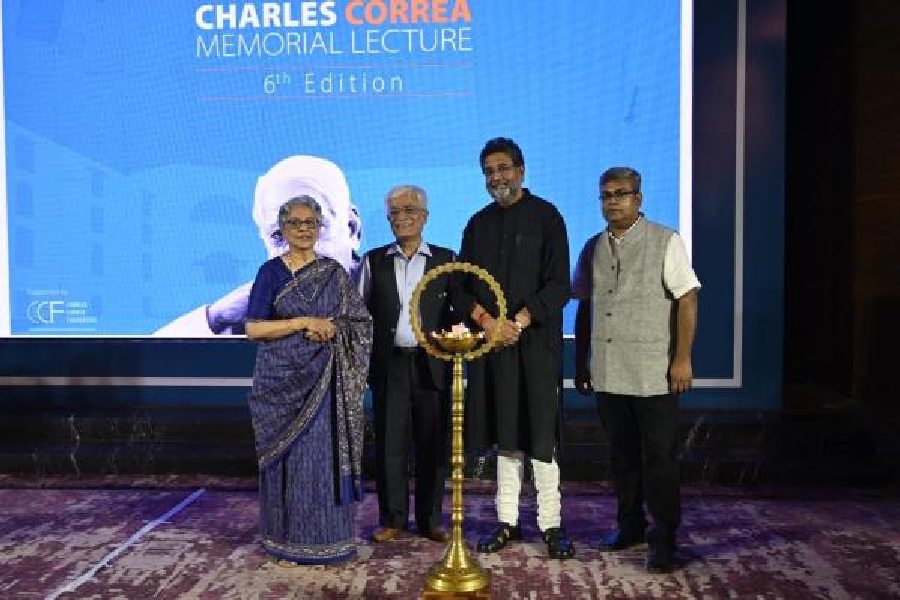The way to build sustainability is by conserving and preserving what has already been built.
Heritage conservation is the way forward towards a sustainable future, said architects Brinda Somaya from Mumbai and Bibhuti Man Singh from Nepal. Somaya and Singh were in Kolkata to deliver the sixth annual Charles Correa Memorial Lecture, organised by the Ambuja Neotia Group on Saturday.
Talking to The Telegraph on the sidelines of the event, both stressed the importance of sustainable architecture, pointing out that buildings are voracious energy guzzlers consuming about 40 per cent of energy.
If building a house accounts for nearly half the energy consumption, air-conditioning leads to the consumption of a further 38 per cent of energy.
"Every architect is talking about green buildings and building sustainably, but how can we build sustainably, that is debatable. There are many rating systems in the world. Natural air-conditioning can also be tried. Charles Correa tried natural air-conditioning in certain parts of City Centre," pointed out Singh, who also underlined the importance of conserving old buildings instead of demolishing and building new ones.
"My heritage projects are the only ones I am proud of. I have made glass boxes, too, but I feel my heritage projects are something to write home about," said Singh, who has taken part in heritage promotion worldwide through expos in Italy, Hanover and Shanghai.
When asked about the Central Vista project in New Delhi that involved a lot of demolition, Somaya said: "We have to understand what has gone before, before we can plan for the future. The importance of sustainability means non-destruction of existing buildings. The biggest loss of energy comes with destroying buildings. It is very important that we restore, recycle, retrofit and re-energise buildings. Any project that entails a huge demolition is always a concern. So how does one work with adaptive reuse? It was adapted to the Central Vista project, but it has also demolished buildings. It's a controversial project."
Talking about Nepal's efforts to counter earthquakes, Singh said: "The recent earthquake has taught us many things. We have revised our building codes and made enforcement strategies, because without enforcement, regulations don't mean anything. We learnt a lot about building design and settlement planning. But we think heritage is being lost in these resettlement plans."
When told that heritage conservation is accorded low priority in Bengal because the state cannot afford heritage conservation, Somaya reacted: "If you are poor, you have to conserve. Heritage is not a luxury. It is the most important way forward towards sustainability."
As part of the Mumbai Heritage Conservation Committee, Somaya along with other members worked on preserving heritage right from listing buildings.
"Mumbai rules were used for the development of Hyderabad and many other cities in India. In the UK, for example, they use the lottery system and the money generated from it is spent on conserving old buildings. It is sometimes too expensive for owners to conserve their heritage buildings. If there is no reduction in taxes or no help from private or public organisations, it is not possible for small owners to conserve buildings. And that is why there is huge destruction of heritage."
In south Mumbai, which has the largest collection of colonial buildings, gentrification has happened, said the architect.
"Restaurants, shops and offices have realised that the value and beauty of heritage buildings, the facade, the tall columns, the high ceilings are fantastic, and the area has changed in the last 10 years. Not just individual houses, but precincts are being conserved and living heritage like rocks, ponds and all natural landscape are also being protected," said Somaya.
